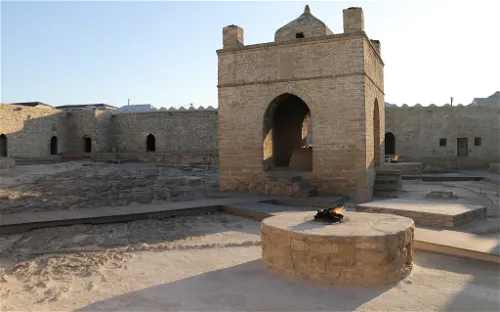Ateshgah of Baku and its collection
The Ateşgah of Baku is a significant historical site, being one of only three Zoroastrian temples in the world. It is situated 30 kilometers away from Baku, in the southeastern part of the Surakhani town on the Absheron peninsula. This location offers a unique opportunity for visitors to explore a rare piece of Zoroastrian history and culture.
Historical Structures of Ateşgah
The Ateşgah temple has a rich history, with its earliest structure, a stable, dating back to 1713. The central prayer area, known as the secdegah, was built later in 1810 by a merchant named Kançanagaran. These historical structures provide a glimpse into the architectural practices and religious customs of the time.
Museum Rooms of Ateşgah
The Ateşgah temple features small rooms surrounding a continuously burning fire, which were historically used by Zoroastrians for worship and self-torture. These rooms have now been converted into a museum, offering visitors a chance to learn about the unique religious practices of Zoroastrianism and the temple's historical significance.
History & Anthropology Religion Religious building






















































